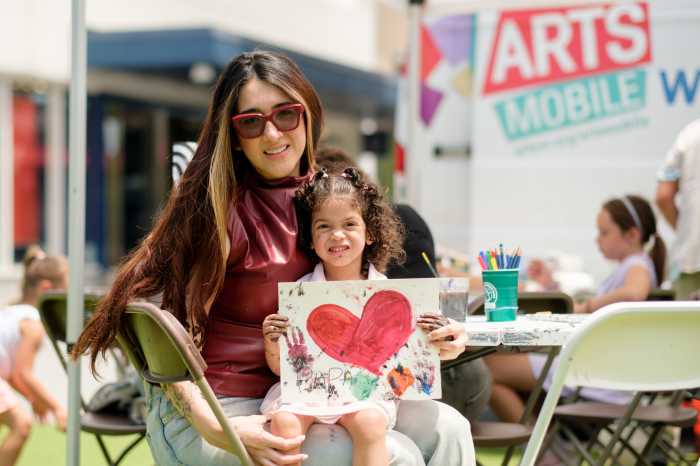A few months ago, my daughter attended a friend’s birthday party held at the SPCA of Westchester in Briarcliff Manor. For two hours she, along with a dozen of her fellow pre-tweens, was surrounded by adorable puppies and kittens – each bundle of joy in need of a new home. When my wife arrived to pick our daughter up, they first took another tour of the cages of sweet, sad, innocent pets-to-be before arriving home and announcing that we were all heading back up there the next day to adopt a cat with whom they’d fallen in love.
Why didn’t I see that one coming?!
But seriously, already the owners of two young cats, my wife and I discussed with our children what it would mean to add a new member to our family. Adding a cat into a home where other cats are already present is a delicate process, and we wanted to make sure our children knew what would be expected of them. They’d been younger when the first two arrived and hadn’t been asked to do much, but now we felt it was time to include them in the care of the pets.
Having them help feed and care for our pets would ease, however slightly, our own workload of course but more importantly, we felt it was a great chance to give our children a taste of responsibility.
Kids Can Care
It turns out that many animal experts agree. “I think it’s certainly helpful for children to have a part in the animal’s [care],” says Paul Klainbard, Doctor of Veterinary Medicine at Hudson Veterinary Hospital in Ossining. “It teaches children responsibility, it teaches them that there’s something they have to look out for and care about other than themselves.”
“Being responsible for another living creature definitely teaches … a child to be kinder to things that are more vulnerable,” says Lisa Bonanno, development manager at the SPCA of Westchester.
There is no specific age when all children are ready for more responsibility; each child is unique. “The younger the better,” says Bonnano. However she, along with everyone we spoke with, stressed that parents must ensure that they model the proper behaviors and that the children are adequately supervised at the beginning. “As far as showing the child once or twice and then expecting them to follow, that’s not going to work at that age. The parent has to take that responsibility and then make sure to include the child,” she says.
Learning to be responsible for pets is a gradual process. “We sometimes hear why people come to adopt and it’s usually a red flag when they say I’m getting it for my kids to teach them responsibility,” says Bonnano. “That’s great, but they have to also mean that they’re taking on that responsibility too. The kids are going to learn from what the parents do and not necessarily know on their own how to properly take care of that animal. It has to be a team, a family effort.”
Before They Arrive
Gina Vercesi of Tarrytown was well aware of this when she and her husband brought home a 13-week-old puppy last April. Before sealing the deal, they sat down with their three daughters, ages 6, 8 and 10. “We did say this is going to be a family project,” says Vercesi. “Everybody’s going to be responsible for taking her out, helping to train her. That was a really big thing, a big responsibility. This was a very long-term decision. We waited until we felt they were all old enough before we brought a ‘new baby’ into the house.”
Klainbard agrees that it is important to have a discussion with your children about how much responsibility they will be expected to shoulder before the pet arrives. “[Parents] can start off by describing that for the dog to be happy, it’s important that they have enough to eat and enough to drink. Make it the child’s responsibility to make sure there’s always water available and they’re getting their meals on time.”
At Home
Once the new family member arrives, there are many ways to give your kids responsibility, but it’s best to start with the basics. “I always recommend, especially with younger children, that the children help feed and walk the dog, because it helps set up the relationship,” says Klainbard.
“[It’s important to] show them how to properly put the collar on, how to properly walk the dog, not to tug too hard on the dog’s neck … so it’s enjoyable for the person and the animal,” says Bonnano. “It’s important for the parent to guide them through that so they know what to do and what not to do.”
Children aren’t born with an innate knowledge of how to properly interact and care for a pet so they need to be shown and, at first, supervised. This is especially important if the animal is a puppy or kitten, because the animals themselves are learning behaviors and their place in the home. A rambunctious child playing tug-o-war with a puppy may teach the dog that it’s OK to play rough with children. “A lot of times [the pets] learn their habits from us,” says Bonnano. “If they have a bad habit, it’s often because they were taught that.”
As your child becomes more comfortable and reliable with the duties you’ve assigned them, you can add more responsibility to help them grow. “In general you just slowly increase that level of responsibility until at some point, and often this is occurring by the time they are 7, 8, 9 years old, the primary caregiver for that pet is, in fact, the child,” says Philip Bergman, D.V.M. and medical director for the Katonah-Bedford Veterinary Center. “It’s one of those things where you have to monitor the situation closely. Often folks will start with simple walks or just feeding. Then it grows to making sure the water bowl is cleaned [regularly] and they’re constantly filling it up. Once the child proves they can be trusted to take care of that pet, it grows into a nearly full-time responsibility.”
Building a Better Child
“I think it’s very important for the relationship of the child and the dog to make sure that they are involved together,” says Klainbard. “Almost every time I have a new puppy come in and there’s a child in the household I recommend that the child feed and take care of the dog from the start to really set up that relationship.”
This advice is good for any pet, not just a dog. A new cat needs to be fed, needs to be played with, and of course someone needs to empty out their litter. “It’s good for [children] to pay attention to cats, especially if [the children are] home a lot,” says Klainbard, who says that often a child will be the first one to notice when the family cat is behaving oddly, such as not eating as much as usual, being unusually aggressive, or spending all its time in hiding – signs which might indicate a larger medical problem.
In the Vercesi household, in addition to the new puppy and an 18-year-old cat, each child has an animal of her own: a hermit crab, a beta fish and a hamster. “They are completely responsible for caring for those pets on their own,” says Vercesi. “The only thing we help out with is the cleaning of cages.”
Knowing how to properly care for an animal at a young age will help your child grow in many ways. “Usually someone who understands [how to care for animals] at a young age obviously will become a good pet owner down the road but overall it makes them a better person in general,” says Bonnano. “If they’ve been taught to be kind and gentle to animals, hopefully that will carry through with how they treat people, other kids, and hopefully it will make them more understanding and patient. Basically, a more well-rounded person in general.”
David Neilsen is a freelance writer, stay-at-home dad and a happy pet owner.











